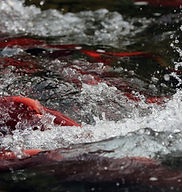The Native Village of Elim's Tubutulik River Watershed Vulnerability & Risk Assessment for Temperature, Dissolved Oxygen (DO) and Stream Flow (Assessment) is designed to establish the current baseline
- Norton Bay Watershed Council

- Jul 23
- 1 min read

On March 29th, 2024, the Norton Bay Watershed Council held a session at the Alaska Tribal Conference on Environmental Management (ATCEM) entitled, "Exploring Local Solutions: Applying Co-Stewardship to Address the Climate Crisis Impacting Watersheds in the Seward Peninsula." The best way for Seward Peninsula Tribes to participate in restoration, build ecological and community resilience, and protect the regional watersheds upon which they depend is to bring back local control and management through co-stewardship agreements. Co-stewardship strives to increase watershed resiliency and support nature-based management to protect and enhance coastal habitats. Topics discussed during the session included: 1) The Reason Why - The Story; 2) Indigenous Traditional Ecological Knowledge (ITEK); 3) Distinction between Co-Stewardship, Co-Management, and Consultation; 4) Co-Stewardship Framework; 5) Keystone Initiatives Gravel-to-Gravel for the Arctic-Yukon-Kuskokwim Region; 6) Landbase Mapping; 7) Co-Production, Actionable Science; 8) Economic Perspectives on Tribal Co-Management; 9) Steps to Consider in Making a Proposal; and 10) Potential Next Steps.
For Full Access to the PDF PowerPoint presentation Slideshows:Exploring Local Solutions: Applying Co-Stewardship to Address the Climate Crisis Impacting Watersheds in the Seward Peninsula; and, Economic Perspectives on Tribal Co-Management Presentation.








Comments